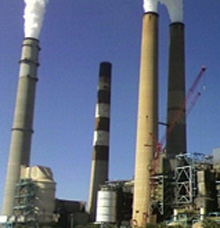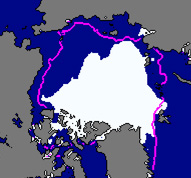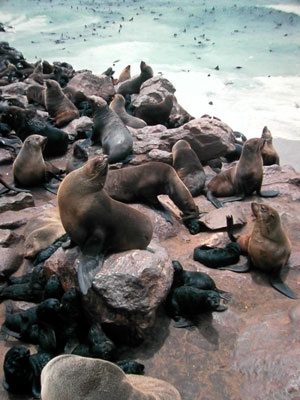Navigation
140 Countries Agree to Negotiate Treaty to Control Toxic Heavy Metal Mercury
A global crackdown on the poisonous pollutant mercury was agreed by Environment Ministers at the UN Environment Programme’s (UNEP) Governing Council on February 20, 2009.
A global crackdown on the poisonous pollutant mercury was agreed by Environment Ministers at the UN Environment Programme’s (UNEP) Governing Council on February 20, 2009.
The landmark decision, taken by over 140 countries, sets the stage for the lifting of a major health threat from the lives of hundreds of millions of people.
 |
| Mercury amalgam plays a large and dangerous role in small scale gold mining. Senegal. Photo by Blacksmith Institute. |
Governments unanimously decided to launch negotiations on an international mercury treaty to deal with world-wide emissions and discharges of a pollutant that threatens the health of millions, from fetuses and babies to small-scale gold miners and their families.
They also agreed that the risk to human health and the environment was so significant that accelerated action under a voluntary Global Mercury Partnership is needed whilst the treaty is being finalized.
The eight-point partnership plan includes:
- Boosting the world-wide capability for nations to safely store stockpiled mercury;
- Reducing the supply of mercury from, for example, primary mining of the heavy metal;
- Carrying out awareness-raising of the risks alongside projects to cut the use of mercury in artisanal mining where an estimated 10 million miners and their families are exposed; and
- Reducing mercury in products such as thermometers and high-intensity discharge lamps to processes such as some kinds of paper-making and plastics production.
Achim Steiner, UN Under-Secretary General and UNEP Executive Director, said: “UNEP has, for some seven years, coordinated and contributed to an intense scientific and policy debate on how best to deal with the issue of mercury. Today the world’s Environment Ministers, armed with the full facts and full choices, decided the time for talking was over—the time for action on this pollution is now.”
“Only a few weeks ago nations remained divided on how to deal with this major public health threat which touches everyone in every country of the world. Today we are united on the need for a legally binding instrument and immediate action towards a transition to a low-mercury world,” he said.
“I believe this will be a major, confidence-building boost for not only the chemicals and health agenda but right across the environmental challenges of our time -- from biodiversity loss to climate change”, said Mr. Steiner.
There are clear and positive links between decisions taken by Environment Ministers at the Governing Council and the ones to be taken later in the year at the crucial UN Climate Change Convention meeting in Copenhagen.
Some facts and figures on mercury:
- Mercury’s damage to the human nervous system has been known for over a century. Alice in Wonderland’s mad hatter echoed the fact that hatters worked with mercury to strengthen brims.
- Eating advisories relating to fish such as tuna operate in many countries targeted at those at risk including pregnant mothers.
- In Sweden around 50,000 lakes have pike with mercury levels exceeding international health limits.
- Women of child-bearing years are advised not to eat pike, perch, turbot and eel at all; the rest of the population only once a week.
- In the United States, 1 in 12, or just under 5 million females, has mercury above the level considered safe by the US Environmental Protection Agency.
- Other potential impacts include impaired thyroid and liver function, irritability, tremors, disturbances to vision and memory loss and perhaps cardiovascular problems.
 |
| Great white shark Increased consumption of shark causes public health concern among scientists. Photo Wikipedia |
- Scientists and the NGO Sharkproject are now also flagging yet another cause for concern—the increased consumption of shark meat in some parts of the world.
- By some estimates these foods contain up to 40 times more mercury than recommended food safety limits and perhaps a great deal more.
Cape fur seals. Seals have high mercury levels. Arctocephalus PusillusPusillus. Photo Wikipedia
- Mercury levels in Arctic ringed seals and beluga whales have increased by up to four times over the last 25 years in some areas of Canada and Greenland.
- Europe and the United States have in recent months backed export bans on mercury -- the European Union setting a date of 2011.
- Meanwhile, Governments in cooperation with UNEP have spotlighted a wide-range of products and processes which now have cost-effective, proven alternatives. The case for others is perhaps less clear cut at least for some manufacturers and economies. For example, high-intensity discharge lamps for use outside the automobile industry, some liquid crystal display units and certain kinds of plastics production.
- Artisanal and small-scale gold mining is perhaps a special case. The victims are among the poorest people in the world.
- An estimated 10 million miners and their families may be suffering in countries from Brazil and Venezuela to India, Indonesia, Papua New Guinea and Zimbabwe from poisoning or exposure.
- On the island of Mindanao, Philippines, 70 per cent of gold miners may have chronic mercury intoxication.
- There is evidence that far from declining, mercury pollution may be on the rise in part as a result of increased coal-burning in Asia.
 |
| Coal Powered Plants are a major source of mercury pollution. Big Bend Power Station in Apollo Beach, Florida. Photo: Wikipedia |
- Of the around 6,000 tonnes of mercury entering the environment annually, some 2,000 tonnes comes from power stations and coal fires in homes. In the atmosphere or released down river systems, the toxin can travel hundreds and thousands of miles.
 |
| Arctic ice extent as of 2008 Image from the National Snow and Ice Data Center (NSIDC) |
- As climate change melts the Arctic, mercury trapped in the ice and sediments is being re-released back into the oceans and into the food chain.
- Everyone alive today has some level of mercury in their bodies. The World Health Organization (WHO) says there is no safe limit.
The wider economic arguments are compelling. UNEP estimates that every kilogramme of mercury taken out of the environment can trigger up to $12,500 worth of social, environmental and human health benefits.
Contacts:
Nick Nuttall, UNEP Spokesperson
Office of the Executive Director
or
Anne-France White, Information Officer
The information in this article is from UNEP, 20 February 2009
Search
Latest articles
Agriculture
- World Water Week: Healthy ecosystems essential to human health: from coronavirus to malnutrition Online session Wednesday 24 August 17:00-18:20
- World Water Week: Healthy ecosystems essential to human health: from coronavirus to malnutrition Online session Wednesday 24 August 17:00-18:20
Air Pollution
- "Water and Sanitation-Related Diseases and the Changing Environment: Challenges, Interventions, and Preventive Measures" Volume 2 Is Now Available
- Global Innovation Exchange Co-Created by Horizon International, USAID, Bill and Melinda Gates Foundation and Others
Biodiversity
- It is time for international mobilization against climate change
- World Water Week: Healthy ecosystems essential to human health: from coronavirus to malnutrition Online session Wednesday 24 August 17:00-18:20
Desertification
- World Water Week: Healthy ecosystems essential to human health: from coronavirus to malnutrition Online session Wednesday 24 August 17:00-18:20
- UN Food Systems Summit Receives Over 1,200 Ideas to Help Meet Sustainable Development Goals
Endangered Species
- Mangrove Action Project Collaborates to Restore and Preserve Mangrove Ecosystems
- Coral Research in Palau offers a “Glimmer of Hope”
Energy
- Global Innovation Exchange Co-Created by Horizon International, USAID, Bill and Melinda Gates Foundation and Others
- Wildlife Preservation in Southeast Nova Scotia
Exhibits
- Global Innovation Exchange Co-Created by Horizon International, USAID, Bill and Melinda Gates Foundation and Others
- Coral Reefs
Forests
- NASA Satellites Reveal Major Shifts in Global Freshwater Updated June 2020
- Global Innovation Exchange Co-Created by Horizon International, USAID, Bill and Melinda Gates Foundation and Others
Global Climate Change
- It is time for international mobilization against climate change
- It is time for international mobilization against climate change
Global Health
- World Water Week: Healthy ecosystems essential to human health: from coronavirus to malnutrition Online session Wednesday 24 August 17:00-18:20
- More than 400 schoolgirls, family and teachers rescued from Afghanistan by small coalition
Industry
- "Water and Sanitation-Related Diseases and the Changing Environment: Challenges, Interventions, and Preventive Measures" Volume 2 Is Now Available
- Global Innovation Exchange Co-Created by Horizon International, USAID, Bill and Melinda Gates Foundation and Others
Natural Disaster Relief
- STOP ATTACKS ON HEALTH CARE IN UKRAINE
- Global Innovation Exchange Co-Created by Horizon International, USAID, Bill and Melinda Gates Foundation and Others
News and Special Reports
- World Water Week: Healthy ecosystems essential to human health: from coronavirus to malnutrition Online session Wednesday 24 August 17:00-18:20
- STOP ATTACKS ON HEALTH CARE IN UKRAINE
Oceans, Coral Reefs
- World Water Week: Healthy ecosystems essential to human health: from coronavirus to malnutrition Online session Wednesday 24 August 17:00-18:20
- Mangrove Action Project Collaborates to Restore and Preserve Mangrove Ecosystems
Pollution
- Zakaria Ouedraogo of Burkina Faso Produces Film “Nzoue Fiyen: Water Not Drinkable”
- "Water and Sanitation-Related Diseases and the Changing Environment: Challenges, Interventions, and Preventive Measures" Volume 2 Is Now Available
Population
- "Water and Sanitation-Related Diseases and the Changing Environment: Challenges, Interventions, and Preventive Measures" Volume 2 Is Now Available
- "Water and Sanitation-Related Diseases and the Changing Environment: Challenges, Interventions, and Preventive Measures" Volume 2 Is Now Available
Public Health
- Honouring the visionary behind India’s sanitation revolution
- Honouring the visionary behind India’s sanitation revolution
Rivers
- World Water Week: Healthy ecosystems essential to human health: from coronavirus to malnutrition Online session Wednesday 24 August 17:00-18:20
- Mangrove Action Project Collaborates to Restore and Preserve Mangrove Ecosystems
Sanitation
- Honouring the visionary behind India’s sanitation revolution
- Honouring the visionary behind India’s sanitation revolution
Toxic Chemicals
- "Water and Sanitation-Related Diseases and the Changing Environment: Challenges, Interventions, and Preventive Measures" Volume 2 Is Now Available
- Actions to Prevent Polluted Drinking Water in the United States
Transportation
- "Water and Sanitation-Related Diseases and the Changing Environment: Challenges, Interventions, and Preventive Measures" Volume 2 Is Now Available
- Urbanization Provides Opportunities for Transition to a Green Economy, Says New Report
Waste Management
- Honouring the visionary behind India’s sanitation revolution
- Honouring the visionary behind India’s sanitation revolution
Water
- Honouring the visionary behind India’s sanitation revolution
- Honouring the visionary behind India’s sanitation revolution
Water and Sanitation
- Honouring the visionary behind India’s sanitation revolution
- Honouring the visionary behind India’s sanitation revolution


